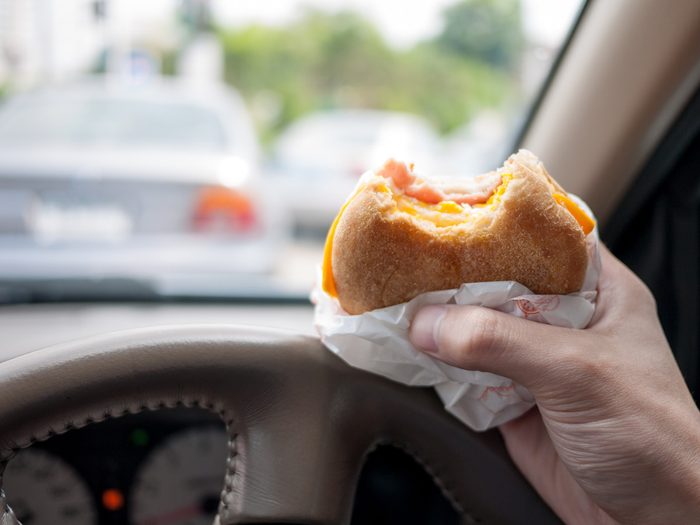
The Truth About Fast Food Breakfast
Breakfast might be the most important meal of the day, but it’s also often the toughest to do right. That morning sprint to get out the door (coupled with a lengthy commute) makes it all too easy to skip the balanced breakfast in favour of a quick and easy fast-food option. Even if you’re trying to make better breakfast choices (surely that muffin is better than a breakfast sandwich, right?) you likely could be doing better, because plenty of foods that are perceived as healthy, are not what you think.
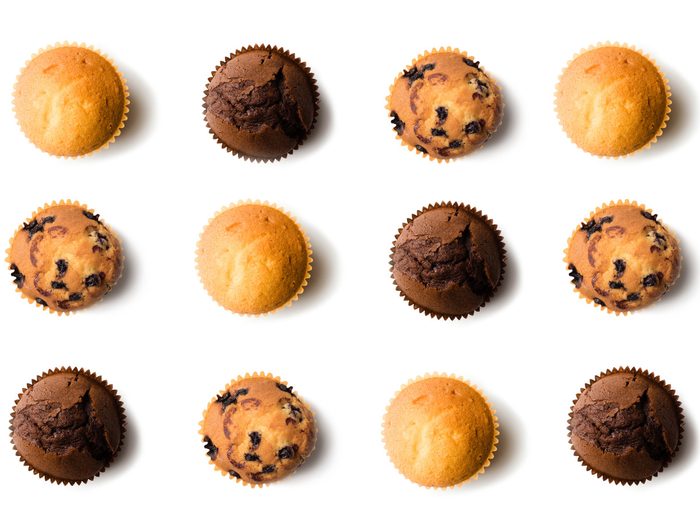
McDonald’s Muffin
There are plenty of people who believe that opting for a muffin over eggs and bacon is the healthiest choice—but in the case of McDonald’s that isn’t exactly true. In fact, it’s rarely the case. Muffins contain quite a bit of sugar says holistic nutritionist Sarah Goldstein. Muffins also tend to be higher in calories and fat, and offer little to no protein, meaning they won’t keep you full for very long. For example, a carrot muffin at McDonald’s has 430 calories, 16 g fat and 35 g of sugar. (Wow.) At this fast food restaurant, you’re better off choosing an Egg McMuffin, which has fewer calories and fat than a muffin. Plus, “eggs are always a great option for breakfast as they’re high in protein and help to keep you fuller throughout the morning,” says nutritionist Jenna Hope.
Carrot muffin = 430 calories, 16 g fat, 330 mg sodium, 3 g fiber, 35g sugar (A fruit and fiber muffin is no better with 380 calories, 14 g fat, 460 mg sodium, 7 g fiber, 28g sugar). In comparison, an Egg McMuffin has 290 calories, 11 g fat, 760 mg sodium and 2 g fiber.
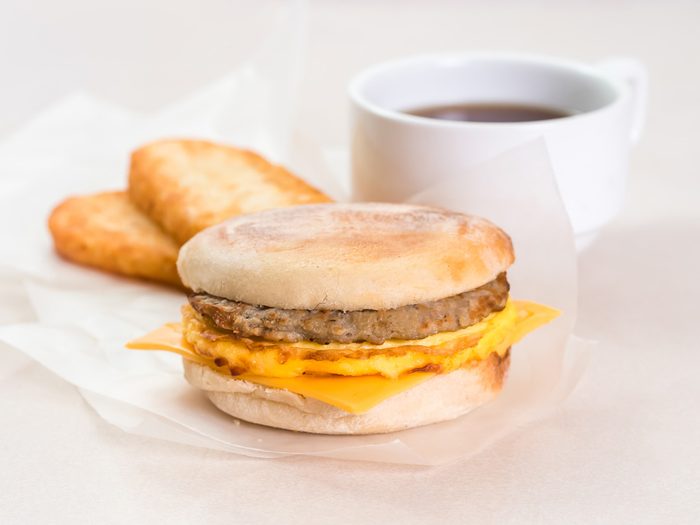
Tim Horton’s Sausage Breakfast Sandwich
Is Timmy’s if your regular stop for coffee and a breakfast sandwich, you might want to rethink the latter. Although the calorie count isn’t too shocking, it’s really the sodium that’s the problem here, which proves that not all breakfast sandwiches are equal. A Tim Horton’s Sausage Breakfast Sandwich has a whopping 1,030 mg of sodium. The Government of Canada recommends adults stick to roughly 1,500 mg per day, and should definitely not have more than 2,300 mg per day. This one breakfast sandwich accounts for nearly all of your daily sodium requirement. (For a lower-sodium way to flavour food, try these spices and sauces.)
Sausage Breakfast Sandwich = 500 calories, 33 g fat, 1030 mg sodium, 2 g fiber
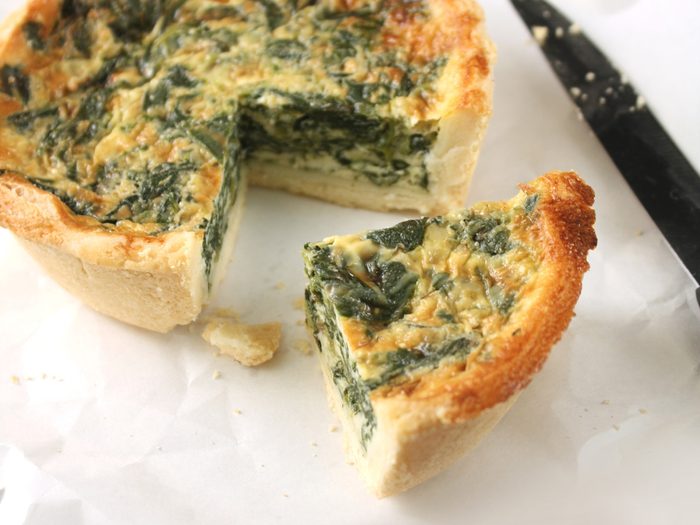
Starbucks Spinach Quiche
Although quiche might seem like a good choice for breakfast (because of the eggs), the dish tends to have other additions that make it not so healthy. Things like heavy cream and other fillers all add up to more sodium and fat. In fact, the Starbucks Spinach Quiche has 24 g of fat and 720 mg of sodium. A better option? “The sous vide eggs at Starbucks are awesome,” says Goldstein.
Spinach Quiche = 420 calories, 24 g fat, 720 g sodium, 1 g fiber (Compare to Sous Vide Egg Whites with Monterey Jack and Peppers = 170 calories, 7 g fat, 500 mg sodium, 1 g fiber)
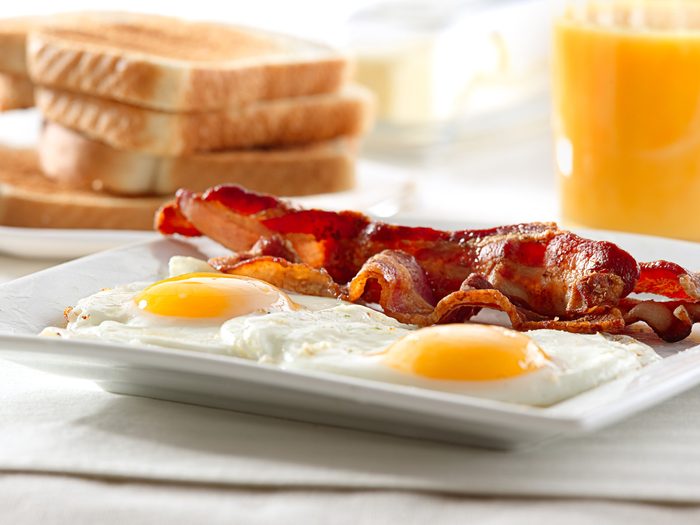
A&W Classic Bacon and Eggs
Sometimes there’s an easy fix to make your not-so-healthy breakfast just a little bit healthier. Take for instance the A&W Classic Bacon and Eggs, which includes a good amount of protein, but unfortunately plenty of sodium as well. “A&W recently launched a meat-free breakfast sausage sandwich, which you can get on a lettuce bun,” says Goldstein. By switching up the bacon to a plant-based Beyond Meat patty and the toast to lettuce, you keep the protein and ditch the unnecessary calories and meat products.
A&W Classic Bacon and Eggs = 550 calories, 27 g fat, 820 mg sodium
Time for lunch? These are the healthiest fast food salads in Canada.

Minute Maid Apple Juice from Wendy’s (or even a fresh-pressed juice)
“Be aware of fruit juice,” says Hope. “When the fiber is removed from the fruit you’re left with a large amount of sugar.” (In fact, the new Canada’s Food Guide no longer includes juice as a healthy option.) If you need your breakfast to be liquid, try a smoothie made with fresh fruit instead so you’re still getting all of that fruit fiber and make sure to add veggies to the mix too. Carrots, greens like spinach or kale and additional ingredients like ginger or flax seed can all help make the most of your liquid breakfast. Even better? Opt for a smoothie bowl that minimizes the smoothie and includes things like fresh fruit and chia seeds to keep you fuller, longer.
Minute Maid Apple Juice = 140 calories, 0g fibre, 31g sugar
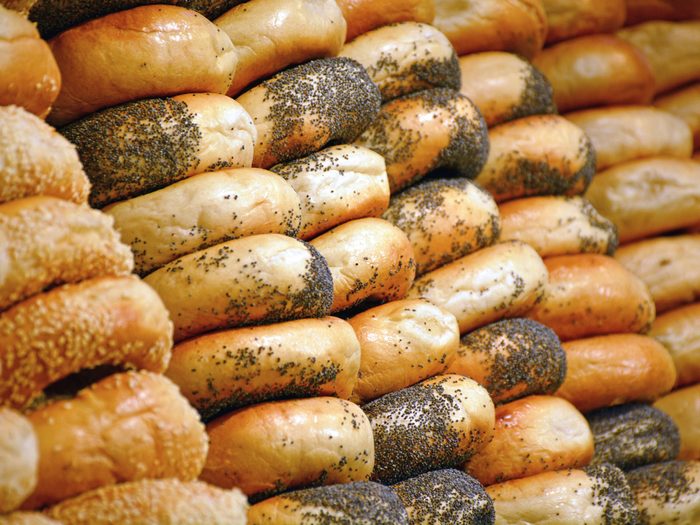
What A Bagel Bagels
While there’s plenty of worse-for-you breakfast options out there, bagels aren’t exactly winning any prizes for healthful morning options either. It’s not that they are inherently bad—it’s just that they don’t have much to offer at all as they don’t really contain any vitamins or nutrients, and often have very little fiber. Plus if you’re opting for a flavoured bagel like Cinnamon Raison, you’re adding unnecessary sugar to the mix too. And then we tend to top our bagels with cream cheese, butter or jam which isn’t doing much for our health either. But, there is a way to enjoy a bagel and get a little extra from it too. Opt for toppings like organic nut butters or have just half a bagel and top it with some lettuce and an egg.
What A Bagel Cinnamon Raisin Bagel = 270 calories, 2.6g fat, 9.6g sugar
Here are 30 quick and healthy breakfasts you can make at home.
